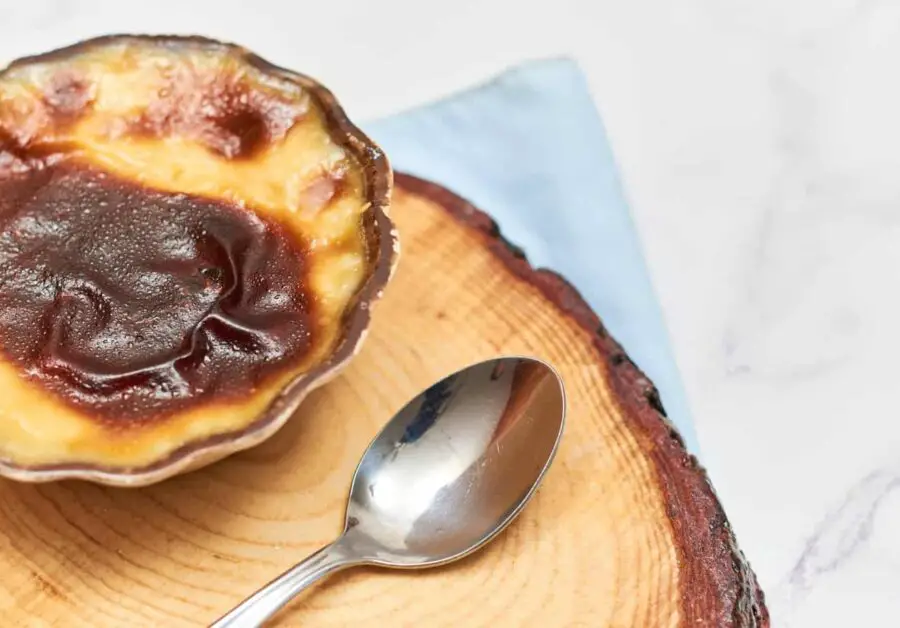Few desserts have more national pride and love invested in them than jericalla and crème brûlée.
Although these delightful custards of France and Spain might at first appear to be similar, they are quite different in many important ways.
But perhaps the most important difference between jericalla and crème brûlée are their ingredients and the way they’re prepared. While both desserts contain sugar, to achieve its silky smooth texture, jericalla relies on whole milk and eggs, whereas crème brûlée’s melt-in-your-mouth texture results from the use of heavy cream and egg yolks. In terms of preparation, jericalla’s darkened top layer is a by-product of baking while in contrast, the familiar burnt sugar crust is by design, a dazzling jewel atop its custard crown.
While those are the most glaring differences between these decadent desserts, there are still others, including their storied histories and much more.
So, if you’re ready to learn about the differences between jericalla and crème brûlée, then sit back, activate those tastebuds and let’s go!
History and Origin Differences
There is a good deal of mystery surrounding the origin of jericalla beginning with the country that lays claim to it.
Actually, there are two countries where it thought that jericalla initially appeared. The first is Spain, specifically the town of Jérica while the second is a town in Colombia known as Jericó. Interestingly, both regions have a similar timeframe for their culinary contribution – the 18th century.
However, neither of these origin stories is nearly as intriguing as the most popular one which tells of its creation as more accident than intention.
As the story goes, there was an orphanage located in neither Spain nor Colombia, but in Guadalajara, Mexico. It seems that a kindhearted nun worked there and wanted to find a way to improve the malnourished conditions facing the children – specifically a lack of calcium and protein in their diets.
To remedy this, she created a custard dessert that was basically what we would consider flan today. However, it seems as though she burned the crust of her creation by accident. To her surprise, the children loved her burnt custard and soon the recipe spread far and wide.
Although the evolution of crème brûlée lacks the drama of jericalla, its history is no less hotly debated with three countries laying claim to it!
That’s right.
England, France and Spain each believe that they hold the top spot for the creation of this beloved classic.
Interestingly, each has a compelling case to make.
Many believe that England should hold the proper title since a version known as burnt cream first appeared there in the 17th century. Not long afterward, Spain’s own Cream Catalana rose to popularity about one hundred years later.
But, of course, the most famous one of all – France’s crème brûlée – is the version most of us are familiar with and have come to cherish.
| Dessert | Origin | Timeframe |
|---|---|---|
| Jericalla |
|
18th century |
| Crème Brûlée |
|
17th-18th century |
Ingredient and Preparation Differences
Jericalla is a cousin of flan, a popular custard dessert the world over, and has similar ingredients.
A basic mixture of eggs, sugar, milk, cinnamon and vanilla extract are all that’s required.
Crème brûlée is similar in that it too requires very little in the way of ingredients. The main difference is the use of heavy cream and egg yolks and, of course, sugar for the caramelized layer on top.
Both are similarly prepared and cooked in ramekins using a bain marie, or water bath.
The “burnt” top of jericalla is accomplished by placing them under a broiler for about five minutes while with crème brûlée, the sugar is caramelized using a torch.
| Dessert | Ingredients | Preparation | Cooking Method |
|---|---|---|---|
| Jericalla | Eggs, sugar, milk, cinnamon, vanilla extract | Mix ingredients together | Cook in ramekins using a bain marie, then place under a broiler for 5 minutes |
| Crème Brûlée | Heavy cream, egg yolks, sugar | Mix ingredients together | Cook in ramekins using a bain marie, then caramelize sugar on top using a torch |
Taste and Texture Differences
Jericalla’s burnt surface is not a true “crust” like you’ll find with crème brûlée but rather a softened charred layer of the eggy, sweet custard beneath it.
Most jericalla recipes feature the spicy delight of cinnamon and smooth finish of vanilla, which adds another layer of richness to this already smooth and delicious Spanish treat.
The eggy texture of jericalla spoons easily and glides across the tongue, delighting your tastebuds with each bite.
Crème brûlée is perhaps most cherished because of the stark contrast in flavors it presents.
First, there is the rich and firm custard layer. When compared to jericalla’s thickness, crème brûlée maintains its rigid form. Each bite you take leaves behind a distinctive placeholder where it’s been carved away.
But without question, it’s the majestic caramelized crust of crème brûlée that not only distinguishes it from jericalla but also defines its signature flavor.
Notes of vanilla cream combine with a toasted, nutty crunch have long sent the tastebuds of crème brûlée’s connoisseurs soaring!
| Dessert | Surface | Flavor | Texture |
|---|---|---|---|
| Jericalla | Softened charred layer | Cinnamon and vanilla | Eggy texture, smooth and glides across the tongue |
| Crème Brûlée | Caramelized crust | Vanilla cream and toasted, nutty crunch | Rich and firm custard layer, maintains its rigid form |

Hi, I’m Jenny. I have many interests and, some would say, eclectic passions. A few words that best describe me? Hmm, well… Amateur surfer, professional traveler, food lover and writer extraordinaire. Oh, and lover of all furry, four-legged creatures!

